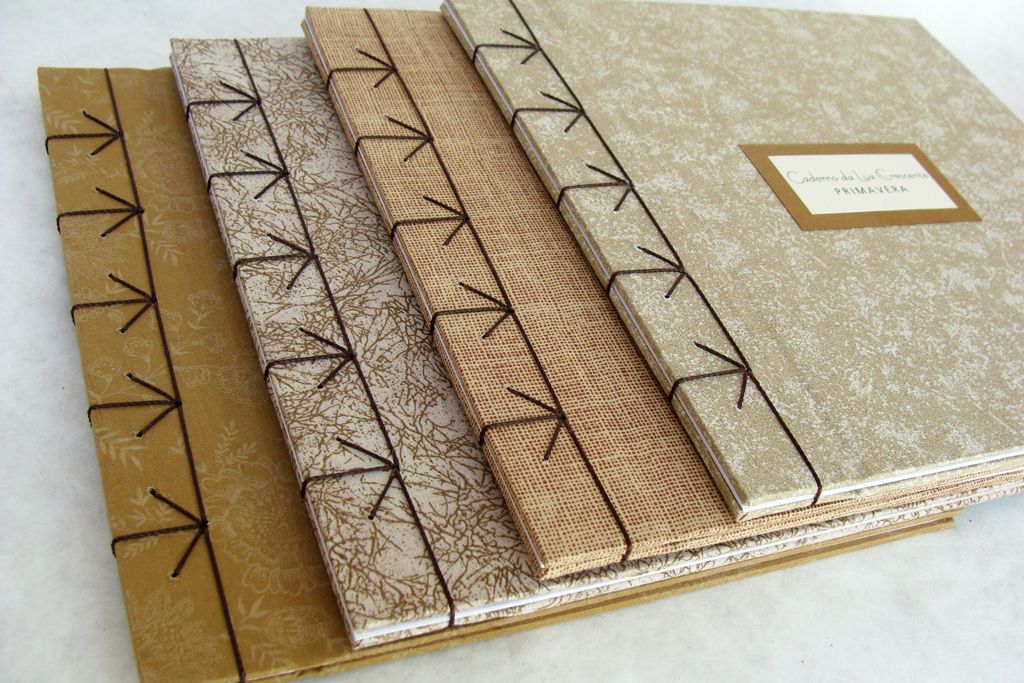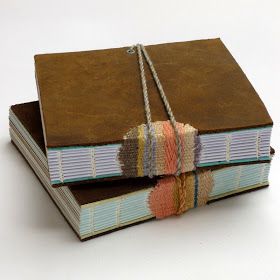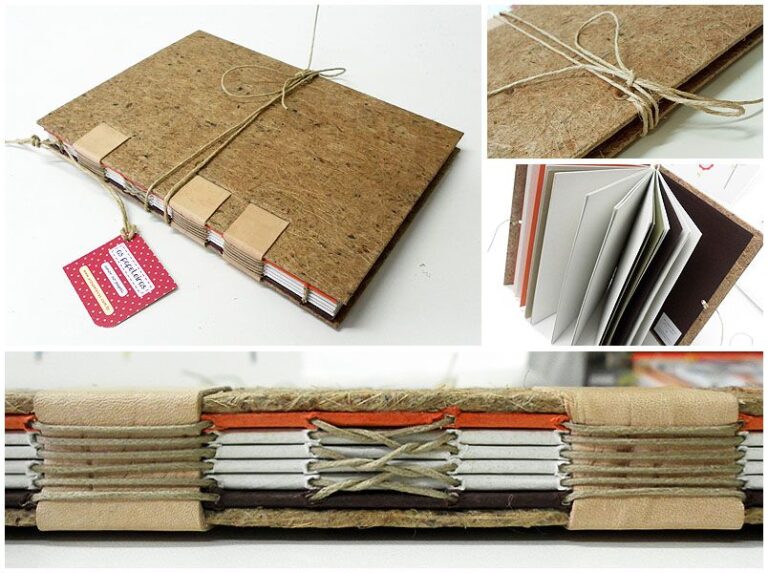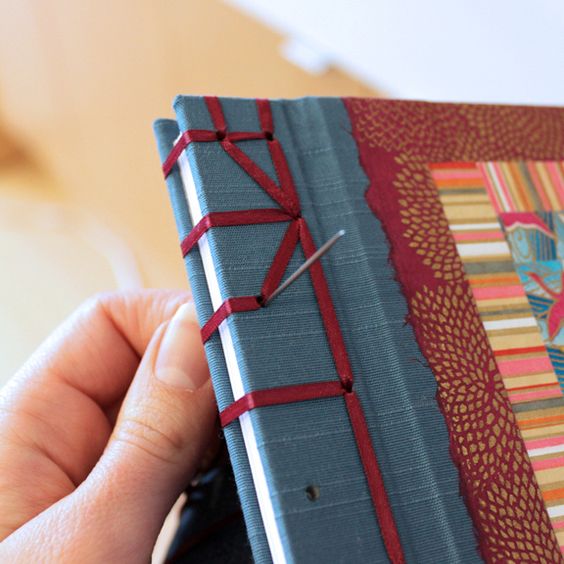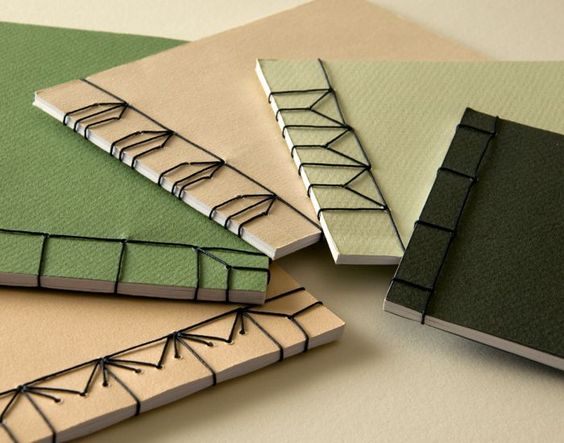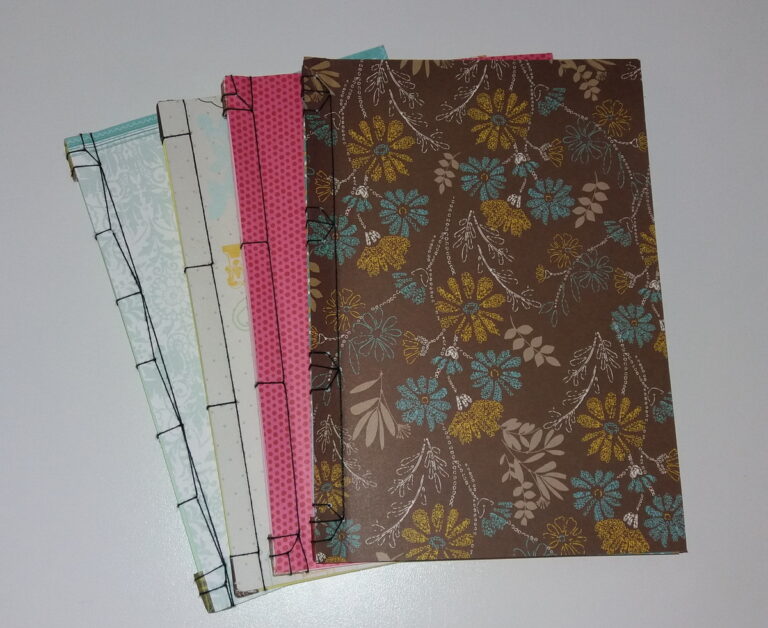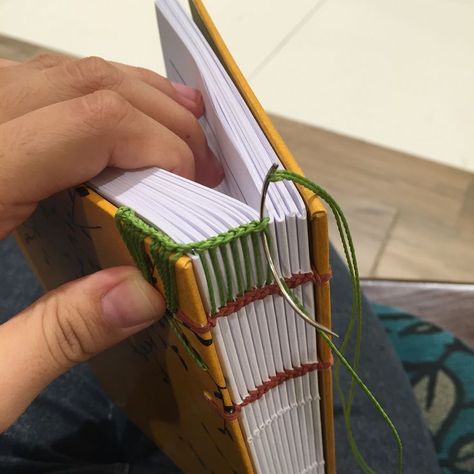Japanese Fabric Binding: Add Texture and Elegance to Your Projects
Bookbinding is an ancient art that combines technique and creativity to transform simple sheets of paper into elegant and lasting works. Among the many binding techniques available, Japanese fabric binding stands out for its delicacy, simplicity and unique beauty. In this article, we will explore the charms of this refined technique that can take the texture and elegance of your projects to a new level.
Table of Contents
What is Japanese Fabric Binding?
Japanese cloth binding, also known as “Japanese Stab Binding” in English, is a variation of the traditional Japanese binding technique that involves sewing pages or sheets of paper together with strips of fabric instead of linen, cotton, or silk threads. . This technique combines the traditional aesthetics of Japanese binding with the durability and visually appealing texture of the fabric.
Here are the basic steps to perform Japanese fabric binding:
- Material Preparation: You will need sheets of paper or parchment for the contents of the book and a piece of fabric for the cover. Make sure the paper and fabric are cut to the desired size.
- Hole Marking: Mark the locations where the holes will be punched on the paper and fabric. The number and position of holes may vary according to the desired pattern, but a common pattern is “Kangxi”, which consists of four equally spaced holes on the spine.
- Punching Holes: Use a needle or awl to make holes in the marked locations, both in the paper and fabric. It is important that the holes are aligned so that the seam is uniform.
- Cutting the Fabric Strips: Cut strips of fabric long enough to cross the width of the spine and allow for tying. The number of strips will depend on the sewing pattern chosen.
- Sewing: Start sewing the paper and fabric together using the fabric strips. Pass the strip of fabric through the holes, sewing according to the desired pattern. A common sewing pattern is the “Noble Stitch” or “Yotsume toji”. Japanese sewing on fabric is known for being flexible and allowing for a variety of creative patterns.
- Binding: When you reach the end of the seam, tie the ends of the fabric strip to ensure the binding is secure.
- Finishing: Cut off any excess strips of fabric and adjust the seam tension, if necessary, to ensure that the book or notebook is well assembled.
Japanese fabric binding is prized not only for its unique aesthetic, but also for its durability and the opportunity to use a variety of fabrics that can add texture and color to binding projects. This technique is often used to create photo albums, notebooks, art books, and other personalized projects that stand out because of their beauty and functionality.
Step-by-Step Japanese Fabric Binding
Necessary materials:
Before you start, it’s important to have the right materials on hand. You will need:
- Pages of the book or notebook you want to bind
- Fine fabric of your choice
- Waxed or cotton threads
- Binding needle
- Cutting base
- Ruler
- Awl
- Scissors
Steps:
- Page Preparation: Arrange the pages you want to bind. Make sure they are aligned correctly and place them on a cutting mat.
- Marking the Holes: Use a ruler to measure the distance between the holes along the spine of the pages. Mark these points with a soft pencil. The number of holes may vary, but it is common to use 3 to 5 holes.
- Drilling: Using a hole punch, make holes at the marked points along the spine. Make sure the holes are accurate and aligned.
- Fabric Cutting: Cut thin strips of your chosen fabric, each a little longer than the height of the pages. These strips will be used to sew the seam.
- Sewing: Thread a waxed or cotton thread through the binding needle and begin sewing through the openings made in the holes. There are several Japanese sewing techniques you can explore to create different patterns. Be sure to maintain adequate tension to ensure the pages are tight but not too tight.
- Finishing: When you reach the last hole, pass the thread through the last opening and tie a tight knot. Cut off excess thread with scissors.
Which Fabrics are Best?
In Japanese fabric binding, choosing the right fabric is essential to guarantee the quality, durability and aesthetics of the project. Some fabrics are more suitable than others due to their texture, strength and handling. Here are some fabrics that are often recommended for Japanese bookbinding:
- Linen: Linen is a fabric of durable natural fibers and is a popular choice for Japanese bookbinding. It has a nice texture and rustic look that complements many projects.
- Cotton: Cotton is another natural fiber fabric widely used in Japanese bookbinding. It’s soft to the touch, easy to work with, and available in a variety of colors and patterns.
- Silk: Silk is known for its elegance and luxury. Although it is more delicate than linen or cotton, silk is a stunning choice for special Japanese bookbinding projects.
- Mixed Fabrics: Some mixed fabrics, which combine natural fibers with synthetic fibers, can be an interesting option. They can offer the durability of natural fibers with additional features such as moisture resistance or ease of cleaning.
- Chirimen: Chirimen is a type of Japanese silk that is often used in traditional Japanese bookbinding. It has a distinctive texture and is often found in more elaborate projects.
- Denim: Denim fabric, popularly associated with jeans, can also be used in Japanese bookbinding. It is resistant and can add a modern and casual touch to projects.
- Canvas: Canvas is a heavy and resistant fabric, suitable for more robust projects or notebook covers that need to resist wear and tear.
- Recycling Fabrics: Sometimes reused fabrics such as old clothing, sheets or curtains can be a creative and sustainable choice for Japanese bookbinding.
- Printed Fabrics: Fabrics with attractive prints can add a unique and decorative touch to your projects. Make sure the print is not too dense, as this may make it difficult to read or view the content.
- Custom Fabrics: If you want a truly unique project, consider creating your own custom fabrics through dyeing, screen printing, or digital printing techniques.
Keep in mind that regardless of the fabric you choose, it is important to do testing and practice before beginning the actual Japanese binding project to ensure the fabric works well with the technique and meets your aesthetic needs. Also, consider the fabric’s resistance to handling and wear, especially if the book or notebook is used frequently.
What Glue to Use for a Japanese Fabric Binding Project?
In Japanese cloth binding, glue is not traditionally used to join the pages together or to attach the cloth to the cover. Instead, the technique relies on sewing the pages and fabric together using strips of fabric or sewing thread. Therefore, it is not necessary to use glue to join materials together in the Japanese binding process.
Glue can be used in bookbinding projects, but it is more common in Western bookbinding techniques, such as hardcover book binding. If you are doing a Japanese bookbinding project, it is important to follow traditional techniques and avoid using glue unless you are working on some decorative or additional element that requires its use.
For projects where glue is required, it is important to choose an appropriate bookbinding glue, such as acid-free PVA (polyvinyl acetate) glue or water emulsion glue. These glues are known for their flexibility, durability, and ability to adhere well to paper and fabric.
However, keep in mind that using glue in Japanese bookbinding projects can change the appearance and structure of the project, making it less traditional. Therefore, if you want to maintain the authenticity of Japanese cloth binding, it is best to stick to traditional sewing techniques and avoid the use of glue when joining the pages and attaching the fabric to the cover.
Advantages of Japanese Fabric Binding
Japanese cloth binding offers a number of distinct advantages that make it a popular choice among craftsmen, artists and lovers of writing. Some of these advantages include:
- Timeless Elegance: The use of fine fabrics adds a touch of sophistication and elegance to projects. The end result is a piece that transcends time and stands out visually.
- Tactile Texture: The combination of paper and fabric creates a unique tactile texture. The different materials complement each other, providing a pleasant sensory experience.
- Durability: The materials used in Japanese binding, such as waxed threads and resistant fabrics, result in highly durable pieces. This is especially important for items that will be handled frequently.
- Customization: The variety of fabrics, thread colors and sewing techniques allows for a wide range of customizations. Each design can be adapted to individual preferences.
Creative Applications of Japanese Bookbinding
Japanese cloth binding is not just limited to creating books. It can be applied to a variety of creative projects, such as:
- Photo Albums: Add an artistic touch to your photo albums, making them truly unique and memorable.
- Notebooks and Journals: Transform notebooks into functional works of art, perfect for writing, drawing or planning.
- Personalized Calendars: Create personalized diaries that combine style and functionality to keep up with your busy life.
- Portfolios and Art Books: If you are an artist, use this technique to present your works in a unique and impressive way.
Conclusion
Japanese fabric binding is a charming technique that combines tradition with contemporary creativity. Its ability to add texture and elegance to projects makes it an exceptional choice for those looking to create pieces that go beyond the functional to become true works of art. Whether gifting to someone special or elevating your own projects, Japanese cloth binding offers a unique form of artistic expression and lasting functionality. Try this technique and discover how it can transform your creations into something truly extraordinary.

